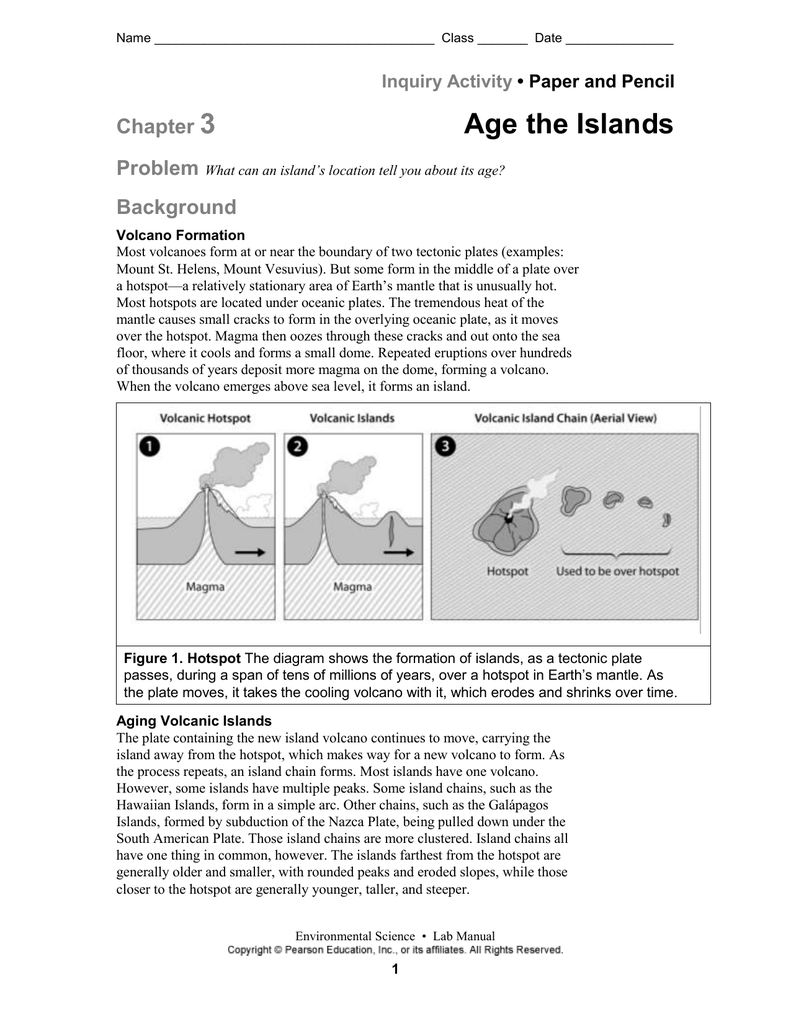Access study documents, get answers to your study questions, and connect with real tutors for ENVS 1401L: Environmental Science Lab at Georgia State University, Perimeter College. Get Free Environmental Science Third Edition Lab Manual Answers environmental science third edition lab manual answers leading in experience. You can locate out the artifice of you to create proper upholding of reading style. Well, it is not an easy challenging if you in reality get not following reading. It will be worse.
Lab Options AP Environmental Science requires the completion of hands-on lab activities and has been approved by the College Board as meeting all requirements for a laboratory science course. To conduct the hands-on laboratory activities in this course, you will need to obtain the materials listed in this document.
- Home
Laboratory # 1: Cycles in the Environment. How resources are recycled on Earth.
Science-SCI207: Dependence of Man on the - discuss how these changes have affected the environment, eScience lab manual and kit. Answer Post Lab a rough draft for your Final Lab. HomeSchoolReviews.com eScience Labs Curriculum Reviews - Read reviews of eScience Labs written by homeschoolers who have used eScience Labs The lab manual presents which included the answers to the end of lab. With these objectives in mind, the curriculum for practicals in Environmental Science has been devised while practical exercises will give you hands-on experience, this manual will help you carry out the exercises. There are 17 exercises, which include 7 Field Studies, 4 laboratory exercises and 6 creative exercises.
Goals: The purpose of this lab is to introduce the idea of cycles in the world around us.

Laboratory # 2: Finding and Understanding Interactions and Relationships among the four Earth’s Spheres
Goals: The main goal of this lab is to understand the Earth as a complex system in constant interaction where four main components can be distinguished.
Pre-lab Questions and Resources

Identify three or four problems that can be affecting the air, water, or land. How can they affect the life in our planet?
Identify two or three natural cycles on the Earth. How do they influence the natural equilibrium in our planet?
How does deforestation affect the carbon cycle?
Laboratory # 3: Climatology. Weather and Climate Data
Goals: The purpose of this lab is to introduce the role climate plays in our environment by looking at weather patterns.

Pre-lab Questions and Resources
1. Please download the data file named 'NMSUclimate.xls' provided on the course website.
2. Use the internet to investigate the climate's role in your course of study (you might be surprised).

3. Read through the following article considering the solutions presented for global warming.
Lab #4: Water Quality Surface Water. Sampling the Rio Grande
Goals: The purpose of this lab is to familiarize students with common surface water contaminants and testing/sampling techniques.
Pre-lab Questions and Resources
1. Visit the EPA website and find the MCLs for as many compounds as you can. For your quiz next week, pay special attention to arsenic, lead, and cadmium.).
2. The EPA maintains a list of approved analytical techniques for determining the level of contaminants in drinking water. Find this list on the EPA website and choose three contaminants to focus on. Could these techniques be used in the field? Why or why not?
3. There are many pros and cons to having fluoride in drinking water - the web is literally overflowing with websites devoted to one side or the other. Using an internet search engine, find a few of these websites and browse the information. Do these sites seem credible? Why or why not? What sites, if any, do you trust?
4. While the EPA maintains standards for our drinking water, the USDA does not regulate contaminant levels in bottled water. Keeping this in mind, what does water purity mean to you? Do the best drinking water supplies contain 100% H2O? Should the USDA consider regulating bottled water?
Lab #5: Soil as a Filter. Using soil to decontaminate water
Goals: The purpose of this lab is to investigate the filtering properties of soil.
Pre-lab Questions and Resources
1. Explain how the hydrosphere, atmosphere, and biosphere all contribute to maintaining healthy soil.
2. Soil can successfully be employed in septic systems, but not all soils are equally good for this purpose. Explain why an extremely sandy or an extremely clayish soil would not work well in a septic system.
Lab #6: Microbes Rules. Their function and importance to life on Earth
Goals: The purpose of this lab is to understand the function and importance of microbes in the cycle of life on the Earth and the role of Microbiology in what we already know about them.
Pre-lab Questions and Resources
1. What kind of microorganisms can be found in our environment? In what sense are some of them dangerous and others beneficial to human life? How do they influence the natural equilibrium of our planet?
Wikipedia: The free Encyclopedia
Exploratorium: Microscope Imaging Station
Microbe World
2. Identify some industrial activities which are intimately related with microorganisms. Are these activities important to our current way of life? Why and in what sense (cultural, economical, social, political)?
Environmental Science 1401 Lab Manual Answers
Microbe World: Microbes in Everyday Products
Lab #7: Soil Erosion and its effect on Natural Resources. Degradation Processes in Soil Environments
Goals: The goal of this lab is to understand the natural and anthropogenic factors that cause the loss of soil, one of our most important natural resources, through degradation processes such as soil erosion and to identify some ways to prevent or decrease it.
Pre-lab Questions and Resources
1. According to the soil taxonomy that distinguishes twelve soil orders, identify what soil order is the most likely to be found in the state of New Mexico. (Remember New Mexico is a big state with lots of different ecosystems). Also, name two soil orders that you would probably not find in New Mexico.
The Twelve Soil Orders. Soil Taxonomy. University of Idaho, College of Agricultural and Life Sciences http://soils.ag.uidaho.edu/soilorders/index.htm
2. In the website 'Soil Erosion Site' (see link below) you will find a section entitled 'About Soil Erosion.' There, click on the link 'What is soil erosion?' and read the information to answer the following: Is soil erosion a natural process, a human induced process, or both? Give two or three examples to support your answer.
Environmental Science Lab Manual Answers
Soil Erosion Site. Website created and maintained by nearly 50 soil erosion scientist from 16 countries http://soilerosion.net/
3. Following the link below you will find some fun cartoons related to erosion. Observe the cartoons 3 and 4 and explain briefly why they represent an unwelcome example of erosion. Refer to some real examples taken from the news regarding this phenomenon.
Erosion Cartoons. CSL Cartoon Stock http://www.cartoonstock.com/directory/e/erosion.asp
Lab #8: Dust and Aerosols
Goals: The purpose of this lab is to introduce dust, and specifically aerosols, as an important factor affecting climate, health, and even world travel.
Important: Take home lab. Instead of a lab report students should answer the three pre-lab questions given in the lab 8 instructions. Each answer shoud be about 1 page long double spaced. You can use the provided web link, but are encouraged to search for other resources as well.
Pre-lab Questions and Resources
1. Can aerosols produced by volcanoes affect our climate?
2. Can dust storms in one part of the world affect the climate and public health of a far away region of the globe? Give an example.
How can aerosols affect earth systems other than the atmosphere?
Lab #9: Remote Sensing. Looking at Earth Using Our Eyes in the Skies
Goals: The purpose of this lab is to provide a basic introduction to remote sensing (RS), while examining the differences between traditional cameras, digital cameras, and multispectral sensors.
Important: Yous should read this document (Remote Sensing) and bring it to the lab session.
Pre-lab Questions and Resources
1. Remote sensing techniques are used in the preservation, management, and exploration of natural resources. Find examples for each of these applications of remote sensing.
2. What are photogrammetry, remote sensing, and geographic information systems (GIS)? How might these technologies relate to your course of study?
Lab #10: Energy Technology - Traditional and Novel
Goals: The purpose of this lab is to familiarize students with the concept of energy and how it is utilized.
Pre-lab Questions and Resources
1. What are possible sources of hydrogen for use in fuel cells? Limit your search to 5 sources.
Activities In Environmental Science Lab Manual Answers

2. Read through some of the discussion on the Glass Line BBS message board (link below). Compile a short list of pros and cons for hydrogen technologies such as fuel cells.
Last update: November 06, 2006General Chemistry Lab Manual Answers
by Hernan Miranda
College of Education, New Mexico State University

Comments are closed.